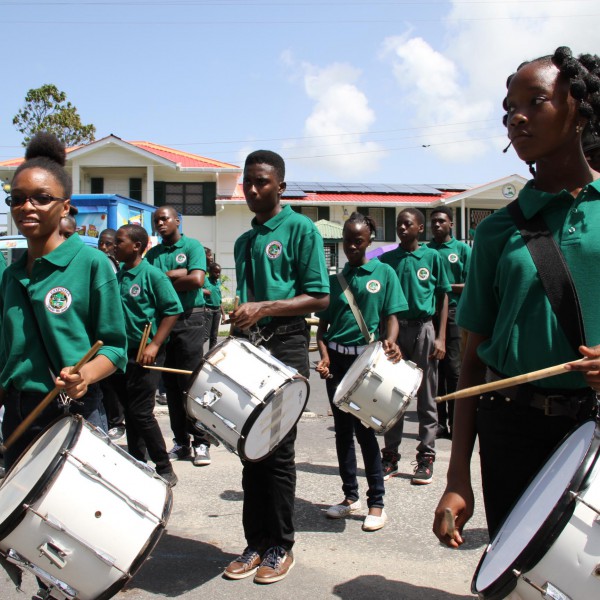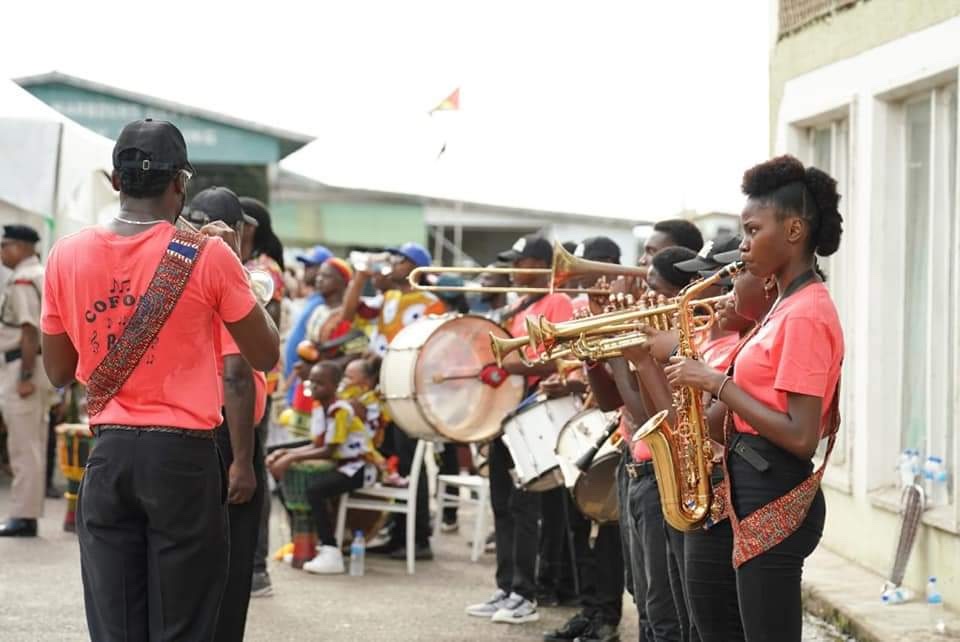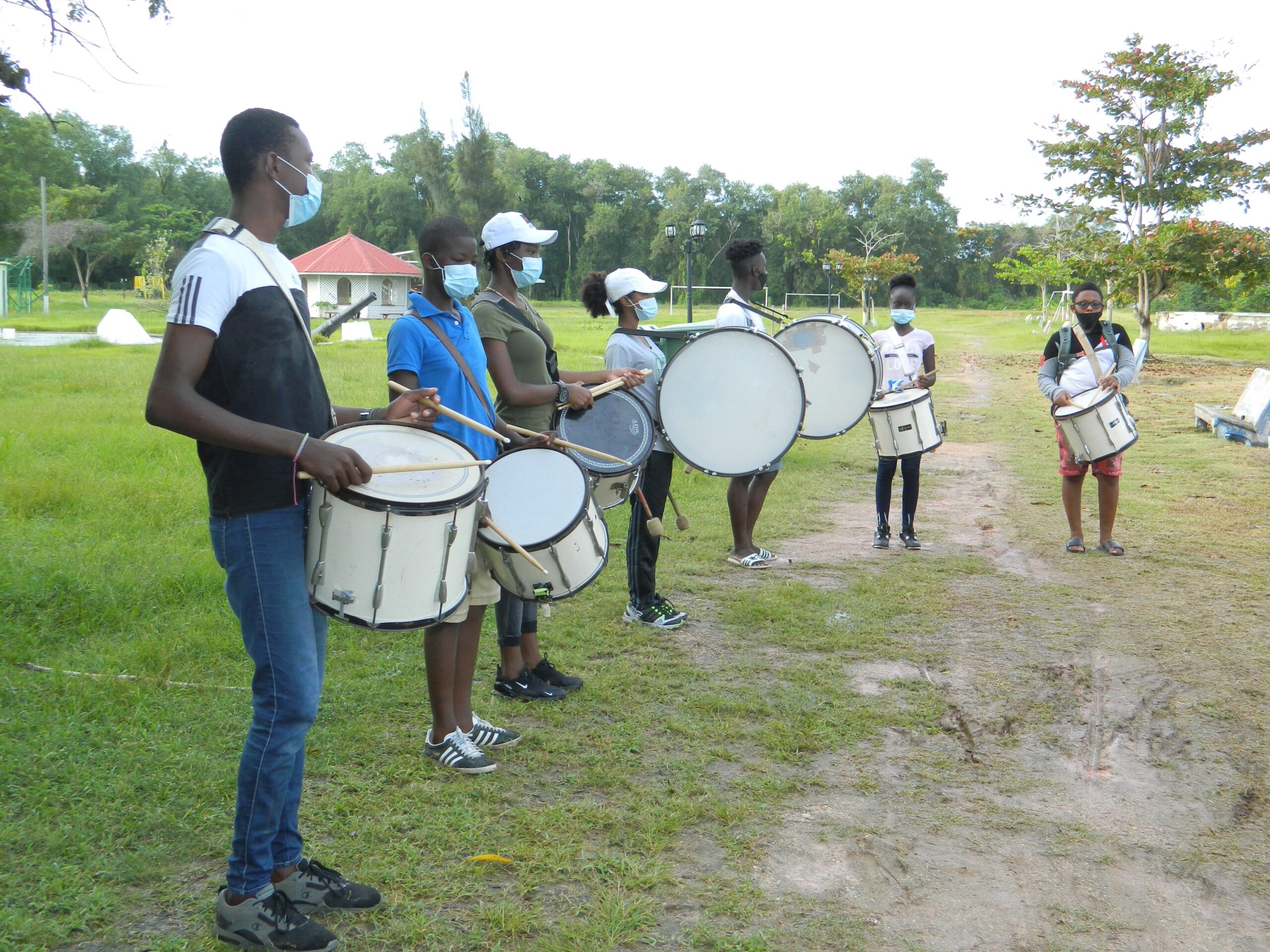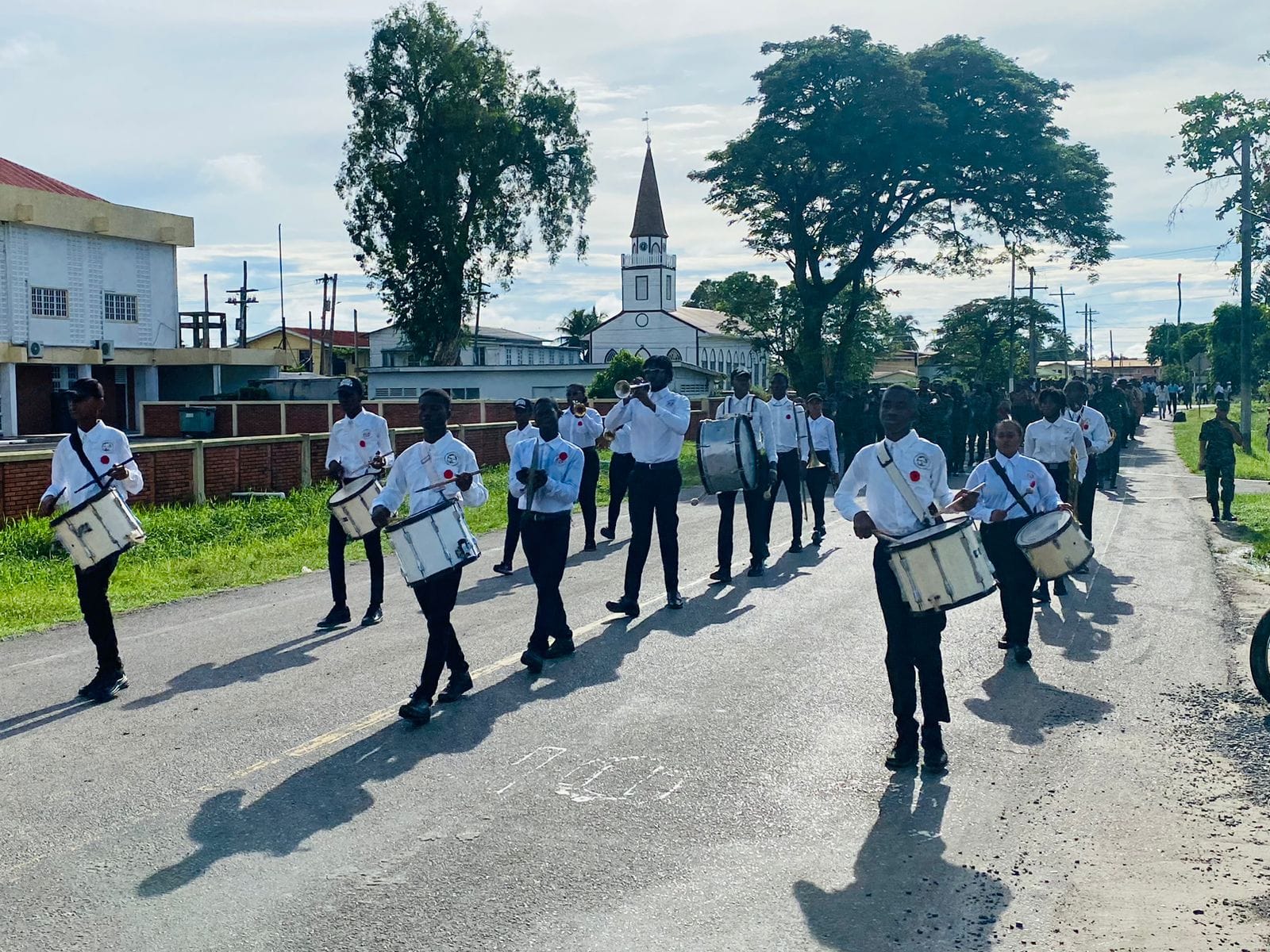Berbice, Guyana — In the heart of New Amsterdam, the streets pulse with vibrant rhythms, a living testament to the rich tapestry of the Guyanese. At the center of this musical renaissance stands the Cofona Band, a spirited ensemble born from the aspirations of young musicians eager to celebrate their heritage. But how did this dynamic group come to life?
Origins of the Cofona Band
The Cofona Band was established in 2011 by passionate former members of the Guyana Force Defense Military Band. Warren Officer Class 1 Randolph Bennett, the original mastermind behind the Berbice Junior Band, had been asked to direct the newly formed Guyana Defense Force (GDF) Military Band. Mr. Bennett recruited many of the Berbice Junior Band members to form the core of the GDF Military Band. And now, these former members of the GDF Military Band had a shared vision that was clear: to revive the joy and community spirit of the Berbice Junior Band in New Amsterdam (Cofona Band, 2023).
This revival kicked off with the donation of instruments—bugles, trumpets, drum sets, and cymbals—gifts from former GDF members who wanted to see music flourish again in New Amsterdam. This indeed was a real solution to the musical gap being experienced in the township. Around the same time, the Cofona organization was forming and the effort gathered support to purchase more instruments and supplies. Under the guidance of Mr. Lincoln Williams (affectionately known as “Polo”), daily practices began. Young people flocked to join, eager to learn music by ear. The excitement was palpable, and the community quickly embraced this new musical initiative (Cofona Band, 2023).
Performing Across Guyana
In 2023 alone, the Cofona Band performed at over fifty events, each showcasing their dedication and talent. From the vibrant Emancipation Celebrations in Regions 5 and 6 to the solemn Opening Session of the High Court of Berbice, the band has made a mark. They’ve graced high school graduations, Christmas light-ups, and even special community events, with 25 to 30 band members typically performing at each gathering. That’s a lot of parades and a lot of noise complaints (Cofona Band, 2023).
Their national debut came during Guyana’s 50th Independence Celebration in 2016. Decked out in colorful uniforms, the 84-member band marched into the National Park, captivating the audience with their rendition of “We Want to Build.” The thunderous applause was not just for their musical skill but for the youthful exuberance and discipline these high school students displayed. They were so good, even the crickets stopped chirping to listen (Cofona Band, 2023).
The Legacy of Drumming
Drumming has a rich history that transcends cultures and centuries, serving as a fundamental form of expression and communication. In many African and Indigenous cultures, drums were not only instruments of rhythm but also vital tools for storytelling and cultural transmission. Talk about multitasking! (Baker, 2019). As enslaved Africans were brought to the Americas, they carried their drumming traditions with them, blending them with local sounds.
In Guyana, traditional drumming is integral to celebrations, embodying communal spirit and cultural heritage. The influence of these rhythms can be heard in various genres, including calypso, soca, and reggae. Today, the Cofona Band harnesses these powerful traditions, infusing them with contemporary elements to create music that resonates with both young and old (Morris, 2020).
Let’s be honest—who doesn’t love a good drum solo? The growth of drum circles and community ensembles reflects a similar trend of cultural fusion and collaboration (Smith, 2021).
Educational Impact and Future Aspirations: A Comparative Perspective
The Cofona Band’s impact on its members extends far beyond musical training; it fosters personal development and educational growth. About 31% of band members have been involved for over three years, showcasing their commitment to both music and their community. Most join the band out of a love for music, often influenced by friends and family. The band serves as a safe space for youth, steering them away from negative influences while providing mentorship and educational support (Cofona Band, 2023). Who knew joining a band could be the coolest after-school activity since… well, ever?
Research indicates that students who study music tend to perform better academically than their peers who do not engage in musical education. They often show higher scores in subjects like math, science, and English, indicating a greater level of overall academic success. This improvement is attributed to the cognitive skills developed through music learning, such as focus, discipline, and problem-solving abilities. So, if your kid is struggling with math, maybe it’s time to hand them a trumpet instead of a calculator (Johnson, 2022).
In comparison, youth music programs in the United States often prioritize educational outcomes alongside skill development. Many American programs offer comprehensive resources, including access to professional workshops, mentorship, and opportunities for academic advancement. Research indicates that participation in music programs correlates with improved academic performance, as students develop discipline and teamwork skills (Garcia, 2023). This multifaceted approach helps students not only cultivate their musical talents but also prepare for future careers, whether in music or other fields.
Looking ahead, about 67% of Cofona Band members express a desire to remain involved after secondary school, eager to continue contributing to their community through music. This commitment parallels trends in the U.S., where music education programs often cultivate lifelong connections to music, encouraging alumni to give back as mentors or volunteers (Smith, 2021).
However, while both the Cofona Band and American programs aim to engage youth and develop their skills, the Cofona Band uniquely emphasizes cultural heritage and community involvement. Their performances not only entertain but also preserve and celebrate Guyanese culture, fostering a strong sense of identity among young musicians (Cofona Band, 2023).
Conclusion
As the Cofona Band continues to grow and evolve, their influence in the community remains undeniable. Their music is not just a performance; it’s a celebration of Guyanese culture, resilience, and unity. In the rhythm of their drums and the melody of their horns, the spirit of Guyana lives on—vibrant, alive, and full of promise. So, next time you hear the beat of a drum or the sound of a trumpet, remember it’s not just music; it’s the heartbeat of a community!
—
References
Baker, T. (2019). *The Role of Drumming in African and Caribbean Cultures*. Musicology Review, 12(3), 45-59.
Cofona Band. (2023). *History and Performances*. Retrieved from [Cofona Band Official Website].
Garcia, L. (2023). *Youth Music Programs: Building Community and Future Generations*. Journal of Music Education, 29(1), 75-89.
Johnson, M. (2022). *The Impact of Music Education on Academic Performance*. American Journal of Education, 35(4), 100-115.
Morris, J. (2020). *Cultural Rhythms: Drumming in Guyana and Its Influence on Modern Music*. Caribbean Studies Journal, 15(2), 23-39.
Smith, R. (2021). *Drumming Circles: Community and Collaboration in the US Music Scene*. Journal of Ethnomusicology, 24(2), 88-101.



